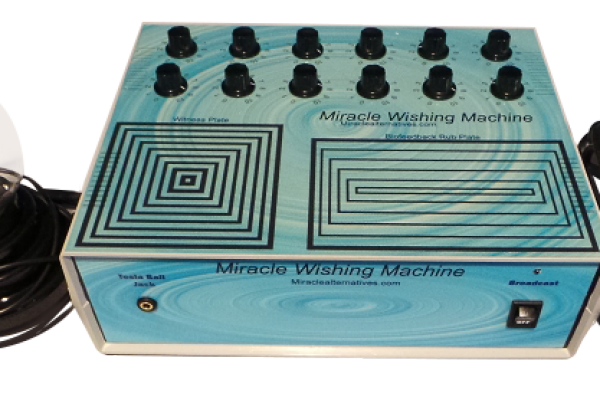Bedbugs have invaded thousands of Philadelphia homes and institutions, and the situation is serious. Philadelphia, in fact, is one of the worst cities in the nation for bedbugs. Don’t ask me why our fair city is plagued with these creatures. Is there something in the water here, or do Philadelphians have a special problem that people in other cities do not have?
The pest-control company Orkin compiled a list of the 50 worst American cities for bedbugs, and Philadelphia has been ranked number nine. Orkin based its ranking on the number of bedbug treatments they performed on residences and businesses in urban areas between 2015 and 2016.
“We have more people affected by bedbugs in the United States now than ever before. They were virtually unheard of in the U.S. 10 years ago,” Orkin’s Entomologist Ron Harrison told CBS3.
Bedbugs begin life as microscopic entities and then, depending on how much human blood they consume, they increase in size and weight until, in some instances, they become as large as a small- or medium-sized cockroach. Bedbugs do not fly, but they climb or jump onto things, mainly wooden and cloth surfaces where they then take great delight in laying their despicable eggs.
If they happen to find a home in your mattress, they will bite you during the night. They bite in clusters of three, meaning you will notice three little dots or bruise-like blemishes on your skin. One bite is never enough for these creatures, although they can live off their first three-bite meal for a long time before their blood lust returns. It doesn’t take all that long for them to grow from small, hard-to-see bugs into significant creepy crawlers.
Welcome to my nightmare, as a famous rocker once intoned.
These athletic pests can even jump on you and hitch a ride on your jacket or sweater and then jump off later when you enter a new house or residence. More spaces to colonize, after all. When they park themselves in a new place they begin their cycle of destruction all over again, laying eggs and hiding in mattresses, woodwork, sofas and curtains until something or someone exposes them. Then you’re likely to see them exit en masse, often in large shocking streams that rival the congestion of ant farms.
One does not have to be dirty or a lowlife sleaze to get bedbugs. Bedbugs were common in colonial America and throughout Europe. In many cases people learned to live with them. Growing up, I had elderly aunts tell me before going to bed, “Don’t let the bedbugs bite,” as if bedbugs were sweet little things with smiley faces and antennae made of chocolate that helped you sleep. I had never seen a bedbug as a kid, so I had no idea what my aunts were talking about. Ticks, bees, spiders and moths I knew, but bedbugs seemed to be a Grimm’s Fairy Tale concoction.
Until I moved to the city…
When my friend Sean showed me a bedbug for the first time I could barely make out its shape because it was so small. We were moving furniture into his new house when he went to move his bed headboard and a bedbug crawled out. A swarm of bugs followed, much larger in size. Sean was so disgusted he went into the bathroom to wash his hands and exclaimed loudly before the mirror: “Oh, no, not bedbugs!”
Sean is such a clean fanatic that people entering his house are required to take off their shoes and put on special booties so that they won’t dirty up his floors. When he had a number of contractors working on his kitchen last spring he made them all take off their boots and put on these wraparound booties that tie up in fancy bows. Shockingly, the contractors complied like little children. Half of Sean’s living room furniture is covered up in plastic, so every time you sit down in his house you hear a series of crinkles. Generally he hates having people in his house because he equates people with dirt.
So how did someone this clean get bedbugs?
He got them from living in Philadelphia, of course, because at any point during his travels about the city he could have touched a railing or banister or even brushed up against someone’s curtains or coat when an eager-to-jump bedbug leaped on him and hitched a ride back to his house where it then deposited its eggs.
Sean, of course, had to throw out the bed’s headboard, but this was only the beginning. He did a thorough house check and found small colonies of bugs in some uncovered pieces of furniture. He waged an expensive, never-ending war: he sprayed, vacuumed, washed and rewashed and then he wrapped the as yet uncontaminated pieces of furniture in airtight plastic wrap so the bedbugs couldn’t claim it as their own. Some of his good furniture had to be thrown away.
Bedbugs have only recently become a citywide plague because over a decade ago there was an effective killer spray that killed them in a Philadelphia minute. This powerful spray nipped the problem in the bud and saved countless valuable pieces of furniture from the trash heap. Then there was the “awful” discovery that the killer component in this spray was DDT, a cancer-causing agent. The effective miracle spray was then banned with nothing of any value to replace it despite the rash of so-called sprays that promised to do the job just as effectively.
All lies, of course.
As the Daily Caller reported, “…Why are bedbugs back? Though they’ve been sucking humans’ blood since at least ancient Greece, bedbugs became virtually extinct in America following the invention of the pesticide DDT. There were almost no bedbugs in the United States between World War II and the mid-1990s. Around when bedbugs started their resurgence, Congress passed a major pesticides law in 1996 and the Clinton EPA banned several classes of chemicals that had been effective bedbug killers.”
Thank you, Bill Clinton.
The new sprays, as Sean discovered, do little or nothing because they simply aren’t strong enough. It also doesn’t help that bedbugs go into winter/cold-weather hibernation, a despicable deep coma-like sleep in which they dream of sucking blood once the warm weather approaches. In the hot weather, they reemerge unless you take the heat ventilation route. Heat remediation requires only one treatment. It utilizes fans and heaters to raise the temperature of the infested area to 120 degrees. The temperature is maintained for hours to ensure that the bedbugs and the eggs are killed. This is a cumbersome and expensive process.
Homeless shelters are notorious for bedbugs despite the fact that they undergo periodic exterminations. The constant influx of new people in shelters all but guarantees new incarnations of jumping bugs eager to inhabit a fresh piece of wood on which to build their nasty nation of bloodsucking bottom feeder vampires.
The most troubling part of this story is that there’s no solution to the bedbug problem unless we bring back the all powerful DDT spray. Some cities and municipalities are considering doing this because their bedbug problems are that great. It’s sad to think that DDT may be the only real answer, especially in our hometown where bedbugs seem to be everywhere, most notably on the coat of the person sitting next to you on the Market-Frankford Line.
Today, Sean is bedbug-free, but the experience has made him even more of a clean fanatic. Visitors to his home, even those contractors I mentioned, have to go through a doubled-up vetting process. While Sean hasn’t gone to the extreme length of asking people to remove their clothing or demand that they put on double booties and gloves, I fully expect that this will be the case if he ever gets bedbugs again.






